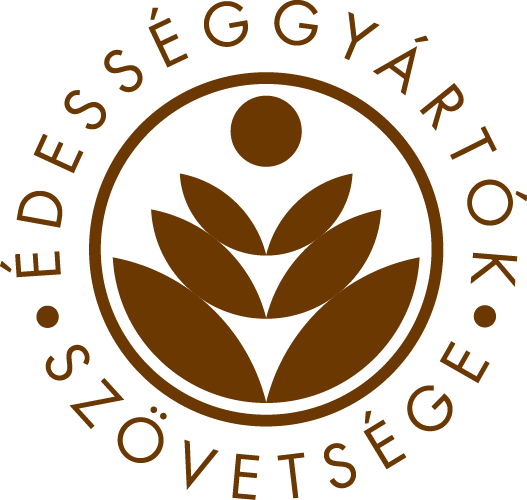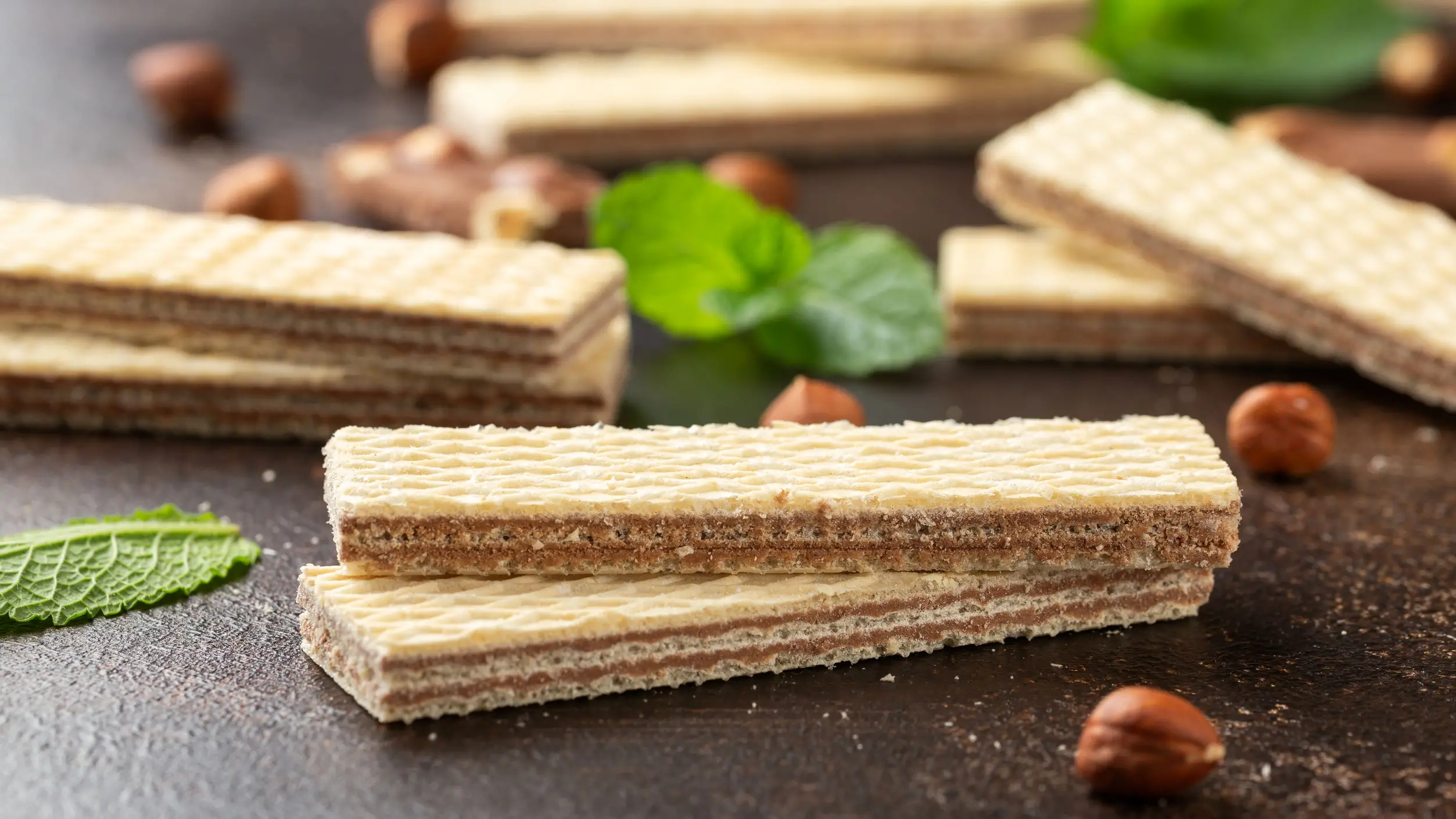When biting into the cone while having an ice cream hardly anyone thinks of a sacrifice, even though the name of the wafer originates from the Latin word hostia, and the product itself is a religious ritual that has found its way onto the plates of those with a sweet tooth. It is also a little-known fact that the Neapolitan wafer made from wafer sheets did not originate in the eponymous Italian city, but was the brainchild of a Viennese pastry chef – and the clues in this story also lead back to the ancient Greeks.
Easy to eat on the go, wafers and Neapolitan wafers are a summer favourite for snacking in the warm weather. Popular for their typically lower sugar and energy content, affordable prices and wide range of products, the market – which is far from free of challenges these days – is set for promising growth, said Sándor Sánta, president of the Association of Hungarian Confectionery Manufacturers, at the organisation’s seasonal roundtable discussion, which, in addition to reviewing trends, also gave a taste of the latest innovations from domestic and international players.
Europe and North America account for the largest share of wafer and biscuit sales, with the two regions accounting for around three quarters of the total global market of USD 100.92 billion in 2021, according to Maximize Market Research’s report (Wafer Biscuits Market – Industry Analysis and Forecast, 2022-2029). According to the analysis, the market size of the product category will grow at an average annual rate of 2.9 percent until 2029, reaching USD 126.85 billion by the end of the decade.
A big slice of the market
In the domestic market, the HUF 55 billion segment of wafers and biscuits accounts for almost a quarter of the market, it is the second largest after ice cream segment with a share of HUF 56.5 billion, said Sándor Sánta in his opening presentation. The secret of success lies in mixing tradition and innovation. Producers of wafers and Neapolitan slices are constantly developing their range, while maintaining the original basics, so they can always adapt to changing consumer tastes and preferences.
While the popularity of the great classics, cocoa-hazelnut Neapolitan wafers, traditional cones and wafer sticks is undiminished, the increasing health-consciousness and gourmet taste of consumers is also reflected in the growing number of products made from wholemeal flours and alternative ingredients, vegan and gluten-free versions, bite-size packaged slices, and the growing sales of products with premium ingredients such as extra chocolate, pecans, lyophilised fruit and special flavour combinations.
At the same time, our industry faces challenges such as the extent of the EPR levy, which enforces extended producer responsibility, the administrative burden of the public health product tax, NETA, and the accumulation of the tax in certain product sectors. Our sector is also plagued by a general shortage of skilled workers, difficulty in recruiting as well as SME financing, non-payment of tenders, while we are seeing a decline in retail sales approaching 13 per cent, down by more than 10 per cent, the President said.
Although consumption may continue to decline in the second half of the year, the Association of Hungarian Confectionery Manufacturers hopes that the negative trend will eventually halt. Having made its opinion known, the organisation hopes to eliminate the NETA accumulation and reduce the EPR fee, and trusts in further rationalisation and reduction of the administrative burden. This, alongside the stabilising prices of raw materials and energy, would be necessary to increase the competitiveness of domestic confectionery producers and to continue the development and innovation that characterise the sector even in difficult circumstances.
Wafer sheets filled with innovation
Even in ancient times, the Greeks made flat biscuits (obelios) from flour and water, baked between two metal sheets over an open fire. Their recipe and method, which was known throughout Europe in the Middle Ages, was developed further by Belgian, French and Dutch confectioners. In addition to the wafers made for religious services, waffles with a higher moisture content and a softer, deep lattice texture also appeared. The leftover edges of the wafers after they were cut to size, were eaten by altar boys sweetened with chocolate or caramel. This may have inspired Oscar Pischinger of Vienna to create the wafer cake named after him in the 1880s, which is still a popular dessert in Central Europe, the Hungarian Museum of Trade and Hospitality pointed out in its historical overview.
Although sweet wafers appeared in the Italian provinces in the early Middle Ages (pizelle), contrary to popular belief, the Neapolitan wafer is not an Italian invention. Its origins can be traced back to Austrian confectioner Josef Manner (1865-1947), who used high quality Italian hazelnuts in the filling of the wafer slice that bears his name, and made a special point of highlighting this to promote the new sweets. The official godfather, however, became the German confectionery company Bahlsen, which in 1940 named its hazelnut-flavoured wafer biscuit Napolitaner in honour of its Neapolitan origins.
The innovation of the wafer, which spans centuries and even millennia, is still going strong today, as illustrated by the presentations of the three guests at the roundtable.
If the name Bakery World Hungary does not ring a bell for many people, its products reach a wider range of consumers, as the company serves its customers with its own-brand ice cream wafers, natural, dipped and filled wafer sticks, Belgian waffles and, as a novelty, caramel and speculoos biscuits, said Márton Sárközi, Managing Director. The direction of development in this palette is shown by the emphasis on quality chocolate coatings, the bite-sized packaging of biscuits and the renaissance of “Utas Ellátó” (Passenger Supply) confectionery combining tradition with innovation.
Urban Édesipari Kft. has grown from a family business to a major market player in 42 years, continuously investing in the development of production technology. Its two production halls produce 3,000 kilograms of Neapolitan wafers per hour, in addition to Christmas honey cakes and tea cakes, and its machinery lines are capable of producing pillow-bag and bucket packaging, stand-up pouch, slice and block packaging, as well as handling different cream fillings and wafer thicknesses within a product. This year, the company will also start production in its third hall, and after packaging premium products, it will also renew its bucket product labels under a unified company logo. The company, which also takes care to protect the environment, with measures such as waste heat recovery, on-site wastewater treatment and the reduction of packaging materials, aims to be at the forefront of the market at a regional level within five years, said Viktória Hullmann, Commercial Director.
Mondelez Hungária Kft. is the market leader in both the chocolate bar and chocolate and other bars sub-segments, with a respective 33% and 40% market share, while in the wafer bars sub-segment it is the third with a 23% market share, said Krisztina Nagyidai, Brand Manager of the Hungarian subsidiary. The supplier, which offers popular international and domestic brands, focuses on both healthy snacking and sustainable cultivation and production, and is responding to consumer demand by opening up to white chocolate, coconut, vanilla and caramel flavours in addition to its most popular basic flavours. Another new addition is the soon-to-be renewed packaging of Milka Waffelini products, as well as a ‘new jersey’ for the Sport bar, which celebrates its 70th anniversary this year.

